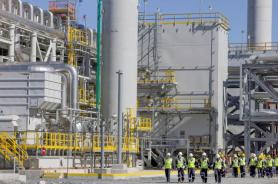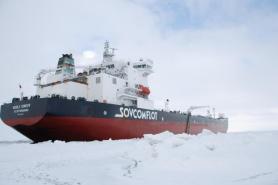
SEOUL, July 28 (AJP) - As Japan signals its intention to join the U.S.-backed Alaska LNG project, pressure is mounting on South Korea to consider following suit — despite deep concerns about the project’s economic and strategic viability.
The massive infrastructure undertaking, long championed by U.S. President Donald Trump, envisions tapping natural gas reserves from Alaska’s North Slope, piping them more than 1,300 kilometers to a planned liquefaction facility in Nikiski, near Anchorage, and exporting the fuel to energy-hungry Asian markets.
With a projected cost exceeding $45 billion, it ranks among the most ambitious energy projects in North America.
On the surface, participation by South Korea — one of the world’s largest LNG importers — could yield strategic benefits, including long-term energy security and deeper integration into global supply chains.
Yet major Korean energy firms remain hesitant, citing serious doubts about the project’s cost-efficiency and long-term competitiveness.
“The engineering and logistical challenges of building in the Arctic are formidable,” said one senior industry official, who requested anonymity. “It’s not just about upfront investment — it’s about whether the gas will be affordable when it finally ships.”
Indeed, financial viability is a major sticking point.
Harsh terrain, remote access, and costly infrastructure have already deterred some of the world’s largest energy players.
ExxonMobil, BP, and ConocoPhillips all exited the project in 2016, citing weak profitability. In 2021, China quietly shelved a $43 billion joint development deal it had signed with the state of Alaska four years earlier.
Price forecasts further complicate the picture. Analysts estimate the landed cost of Alaska LNG in South Korea could exceed $13 per million British thermal units (MMBtu), far above the current Asian spot price of around $3.15.
A return to global supply normalcy — or easing geopolitical tensions — could widen that gap, undermining the project's commercial case.
That has kept potential Korean stakeholders like SK Innovation, POSCO International, and GS Caltex on the sidelines.
SK Innovation, currently focused on streamlining its core businesses, lacks the financial bandwidth for new LNG ventures. GS Caltex imports only small volumes of LNG for in-house use and is structurally unsuited for megaproject participation.
Still, the project has attracted interest from other corners of Korean industry. Shipbuilders and steelmakers are eyeing a potential windfall.
Companies such as SeAH Steel and Dongkuk Steel could supply high-specification pipeline components, while Hanwha Ocean and HD Hyundai Heavy Industries are positioned to secure orders for icebreaking LNG carriers designed for Arctic navigation.
But analysts warn that any move to formally join the project would come with substantial financial and policy risk.
“Alaska LNG faces steep uncertainties — from extreme climate conditions to long-term demand trends,” said Shin Hyun-don, a professor of energy resources engineering at Inha University. “If Korea finds participation unavoidable, it would be wiser to approach the project as a buyer of LNG, not a financial stakeholder.”
Copyright ⓒ Aju Press All rights reserved.



